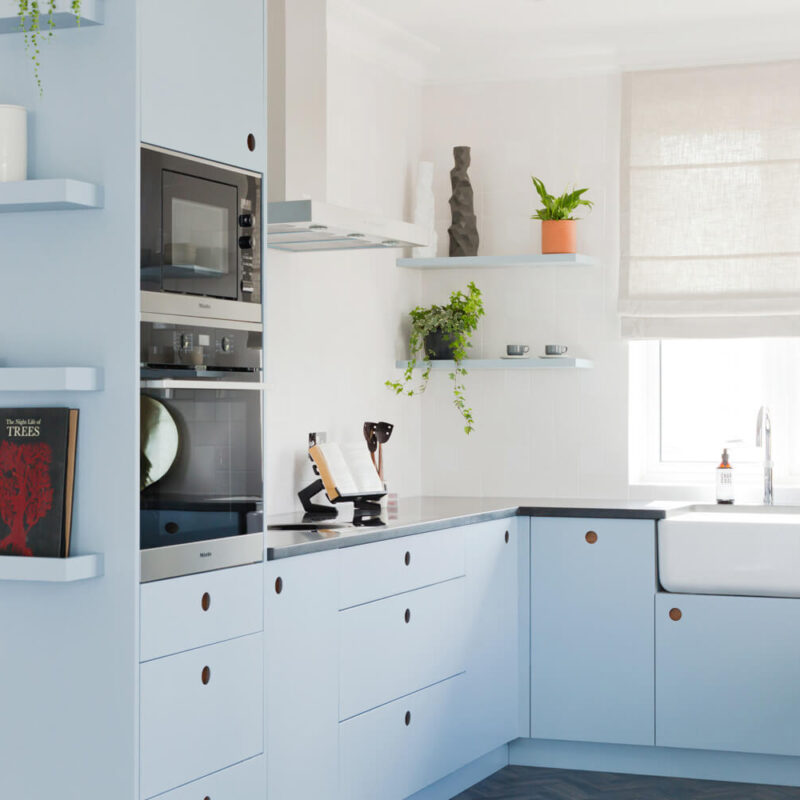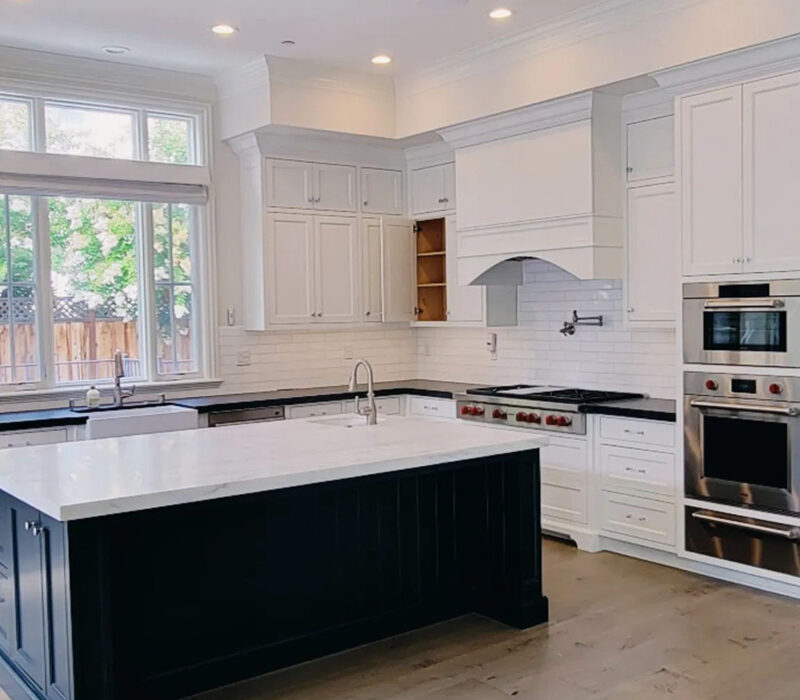When it comes to painting your kitchen, should you go for something bold or keep it subtle? Neutral or vibrant? Monochrome or a mix of colors? Finding the right color scheme for your kitchen is both an art and a science, and there’s more to consider than you might think. This guide will help you navigate the process and choose the perfect colors for your kitchen.
The kitchen is the heart of the home—where we cook, eat, work, and play. It’s a space that needs to handle everything from quiet breakfasts to lively family dinners. How your kitchen looks and feels has a big impact on your daily life, and the colors you choose play a huge role in creating that atmosphere.
Choosing the right colors gives you a chance to express your personality, make a design statement, and set the tone for your entire home. This guide will help you make key decisions about color, avoid common mistakes, and offer plenty of ideas to create the stylish kitchen you’ve always wanted.

The Basics of Planning a Kitchen Color Scheme
Before diving into color palettes and paint swatches, ask yourself a few key questions:
- What mood and style are you aiming for? Do you want a traditional look or something more modern? Cozy and warm, or sleek and cool? The colors you choose will significantly influence the mood of your kitchen, so think about how you use the space, who uses it, and how you want it to feel.
– - What’s the size and layout of your kitchen? The right color scheme can help maximize your space, especially in smaller kitchens where the right colors can make a room feel larger.
– - How much natural light does your kitchen get? If you have lots of natural light, colors will appear more true, and you can experiment with darker hues. If your kitchen relies more on artificial light, you might want to stick with brighter tones to keep the space feeling open and airy.
– - How often do you like to redecorate? If you enjoy changing your decor frequently, consider using neutral colors for the more permanent and costly aspects like cabinets, countertops, and flooring. Save the bolder colors for areas that are easier to update, like walls and accessories.

The 60:30:10 Rule: Using Three Colors
To avoid overwhelming your kitchen with too many colors, try sticking to three main colors, following the 60:30:10 rule—a popular guideline in interior design.
–
Here’s how it works:
– 60% of the room should be one dominant color. This could be your flooring, ceiling, and countertops.
– 30% is a secondary color that complements the first. This might include cabinets, painted walls, or large appliances.
– 10% is an accent color, used sparingly to add interest. Think of this for elements like splashbacks, tiles, or smaller accessories.
–
This balanced approach can help you create a cohesive look that’s pleasing to the eye. When designing your kitchen, start with the larger areas and then coordinate the smaller elements to create harmony.
By considering these tips and guidelines, you’ll be well on your way to creating a kitchen that not only looks great but also feels like home.




